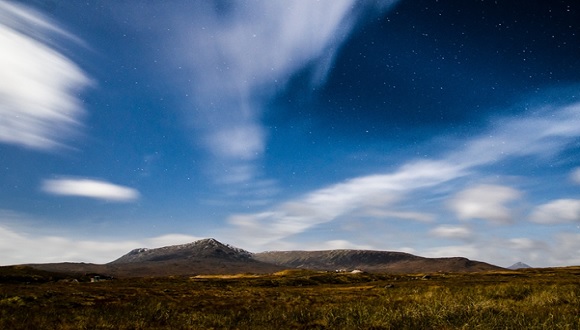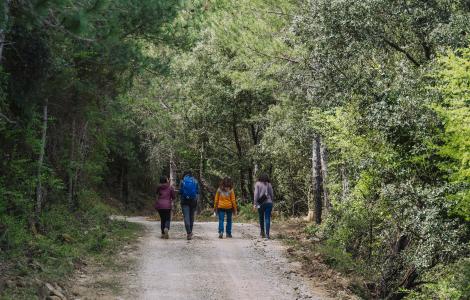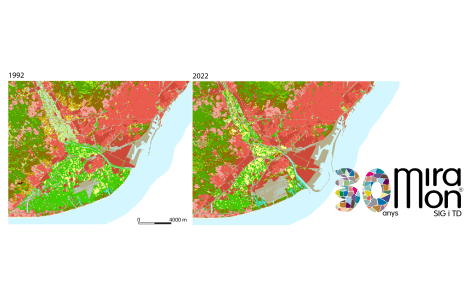CO2 absorption in European ecosystems depends on two major climatic phenomena

The worst scenario occurs when NAO and EA are in opposite phases. This ocurred in the first few years of the previous decade and during this period, the CO2 uptake was below average. Recently, NAO and EA were in the same phase and ecosystems have been able to remove more carbon from the atmosphere.

The quantity of CO2 absorbed by European ecosystems depends on two climatic phenomena capable of changing the climate of the entire continent. This is the conclusion reached by a study published in Nature Communications which had the participation of CREAF and CSIC researcher Josep Peñuelas. The research explains how the North Atlantic Oscillation (NAO) and East Atlantic Pattern (EA) atmospheric phenomena caused unusually low rates of carbon capture in European ecosystems at the beginning of the 2000-2010 decade. Though the situation has returned to normality over the last few years, it is expected that the combination of these phenomena in the future will spell less favorable conditions for CO2 absorption.
Terrestrial ecosystems have a paramount role in atmospheric CO2 capture, absorbing 30% of human emissions and thereby helping to reduce global warming.
“Annual CO2 absorption by European ecosystems depends on the way the gradients of atmospheric pressures of NAO and EA are combined. They control wind, precipitation, and distribution of humid and warm air heading towards Europe,” says Josep Peñuelas. During the final years of the 20th century and beginning of the 21st, the phenomena were in opposite phases, one in its positive phase and the other in its negative phase. This is the worst possible scenario for ecosystem CO2 sequestration since during periods of opposite phases, a large part of Europe typically experiences greater drought and more extreme temperatures, all of which hinders CO2 absorption. This is because carbon sequestration depends on photosynthesis, the process in which plants capture atmospheric carbon and incorporate it into their structures. The importance of this process becomes clear considering that terrestrial ecosystems have a paramount role in atmospheric CO2 capture, absorbing 30% of human emissions and thereby helping to reduce global warming.
Just as the rest of Europe, in the Iberian Peninsula the worst scenario occurs when the atmospheric phenomena are in opposite phases and particularly with NAO+ y EA- since this results in high water evaporation and a large hydraulic deficit for plants, which are of course responsible for atmospheric CO2 removal and sequestration in ecosystems.
The trend in recent years has been towards a greater carbon uptake, although it seems this could change again.
Predictions for the future are not so hopeful. According to the study, the positive phase of the NAO will dominate, hindering carbon capture in ecosystems.
Fortunately, it appears that during the past few years European ecosystems have begun to absorb more carbon dioxide. According to the study, this coincides with the fact that NAO and EA were found to be in the same phase. “The greatest carbon sequestration happens when both NAO and EA are found in the negative phase. Under these conditions, cold winters affect most of Europe, contributing to significant snow covers in the central and eastern parts of the continent. This helps keep soils humid during spring and even through the summer,” says Peñuelas.
However, predictions for the future are not so hopeful. According to the study, the positive phase of the NAO will dominate, hindering carbon capture in ecosystems, especially when the EA is in negative phase.
The North Atlantic Oscillation is a phenomenon resulting from differences in atmospheric pressure between the Iceland depression and the Azores anticyclone. The depression causes low pressures, while the anticyclone causes high pressures. The greater the difference in pressure between these two points in the Atlantic, the greater the power of the NAO. When the difference in pressure is substantial, the NAO is found to be in positive phase, but when the both the Iceland depression and the Azores anticyclone are weak, there is a small difference in pressure, and the NAO is in negative phase. The East Atlantic Pattern, while weaker than the NAO, it is also the result of differences in pressure between areas, including some subtropical influence.

| FOUR POSSIBLE SCENARIOS | |
| SAME PHASE | |
| NAO+EA+ | In winter, transport of warm and humid air to Northern Europe and dry cold winters in the South. More precipitation as water rather than snow in Europe, and mild summers in the South. |
| NAO-EA- | Dry and cold winters in Northern Europe with mild temperatures and humid winds in the South. Large quantities of snow over much of the continent. Dry and hot summers in the South. |
| OPPOSITE PHASE | |
| NAO+EA- | Mind winters with less snow in the North and East Europe, and cold and dry winters in Central Europe and the Western Mediterranean, with significant evaporation of soil water. Dry summers in Central Europe. |
| NAO-EA+ | Cold winters with large amounts of snow in Europe, and mild and wet winters in the Western Mediterranean. |
The study was leaded by Ana Bastos, from the Laboratoire des Sciences du Climat et de l'Environnement, in France.
ARTICLE
Bastos, E., Janssens, I.A., Gouveia, C.M., Trigo, R.M., Ciais, P., Chevallier, F., Peñuelas, J., Rödenbeck, C., Shilong, P., Friedlingstein, P. and Running, S.W. European Land CO2 sink influenced by NAO and East-Atlantic Pattern Coupling. Nature Communications (2016), doi: 10.1038/NCOMMS10315
Noticias relacionadas

El IPBES publica dos informes para transformar la forma en que nos relacionamos con la naturaleza, conservarla y sobrevivir

El impacto social de la investigación se consolida en la cultura científica del CREAF


